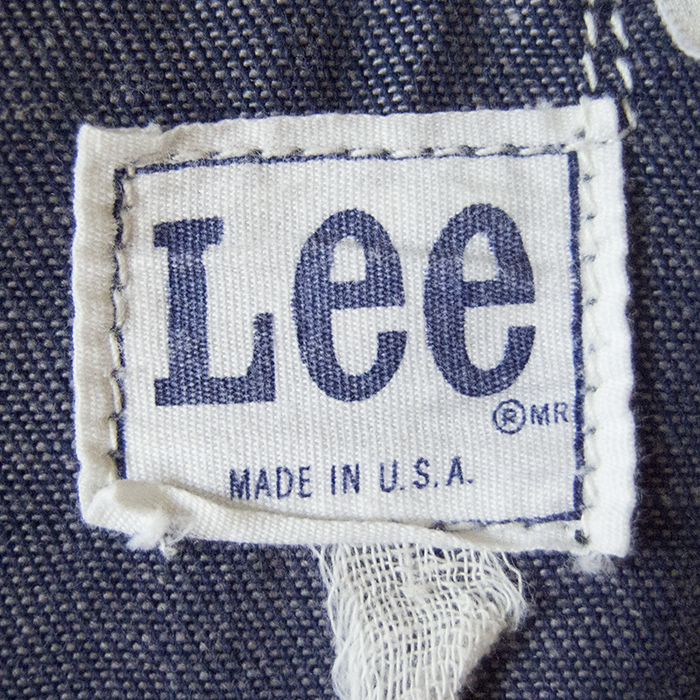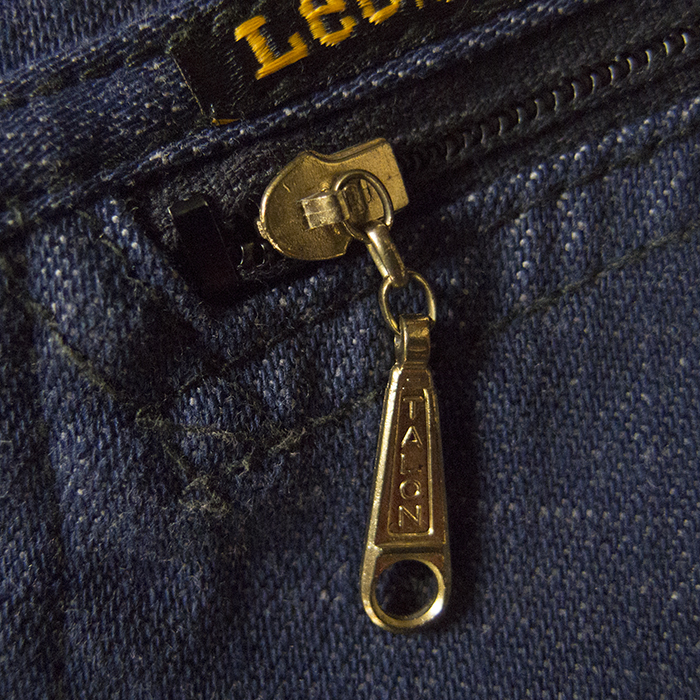Lee's work jacket 91-B, from the 1970s, the last period of the model. It is one of Lee's representative work jackets, with its distinctive zip front and slanted pockets. It is one of the models. As it's relatively newer in age, it doesn't have a vintage look to it, but it has Lee's unique gelt denim eye It has a tightly packed texture. It's not expected to fade too much, but it's a piece of clothing that has a Lee feel to it, judging by the design.
It has a zipped front with slanted front pockets, and is a model from the late 1920s.
The stitching was all triple-stitched, which seemed to be very innovative for the design of the time. All stitching is triple stitched.
The stitching was all triple-stitched, which seemed to be very innovative for the design of the time. All stitching is triple stitched.
tag
The logo name contains all of the "○R" and "M.R." and is marked "Made in U.S.A. Tags. from the 1970s.
tag
A tag attached to the upper right corner of the logo tag. Most of the writing is gone, but it seems to have been written as a warning for washing.
pokcet
Left chest and pockets on both sides. The side pockets are angled so that they can be laid out more than the 101-J, and can be used as hand warmers and It seems to have been attached as a pocket.
cuff
The buttons on the sleeves are cat-eye buttons. As this is workwear, the metal could be avoided as it might damage the object if it came in contact with it. Two buttons are attached to the sleeves, and the sleeve tips can be adjusted for fineness.
fabric
Lee's familiar light ounce 2×1 denim, known as gelt denim, 1970. There is almost no sense of unevenness, probably because it was made in the 1950s, and the colors are expected to fade. The fabric is ideal for workwear, as it has a dense and even weave that ensures durability. It must have been something like this.











